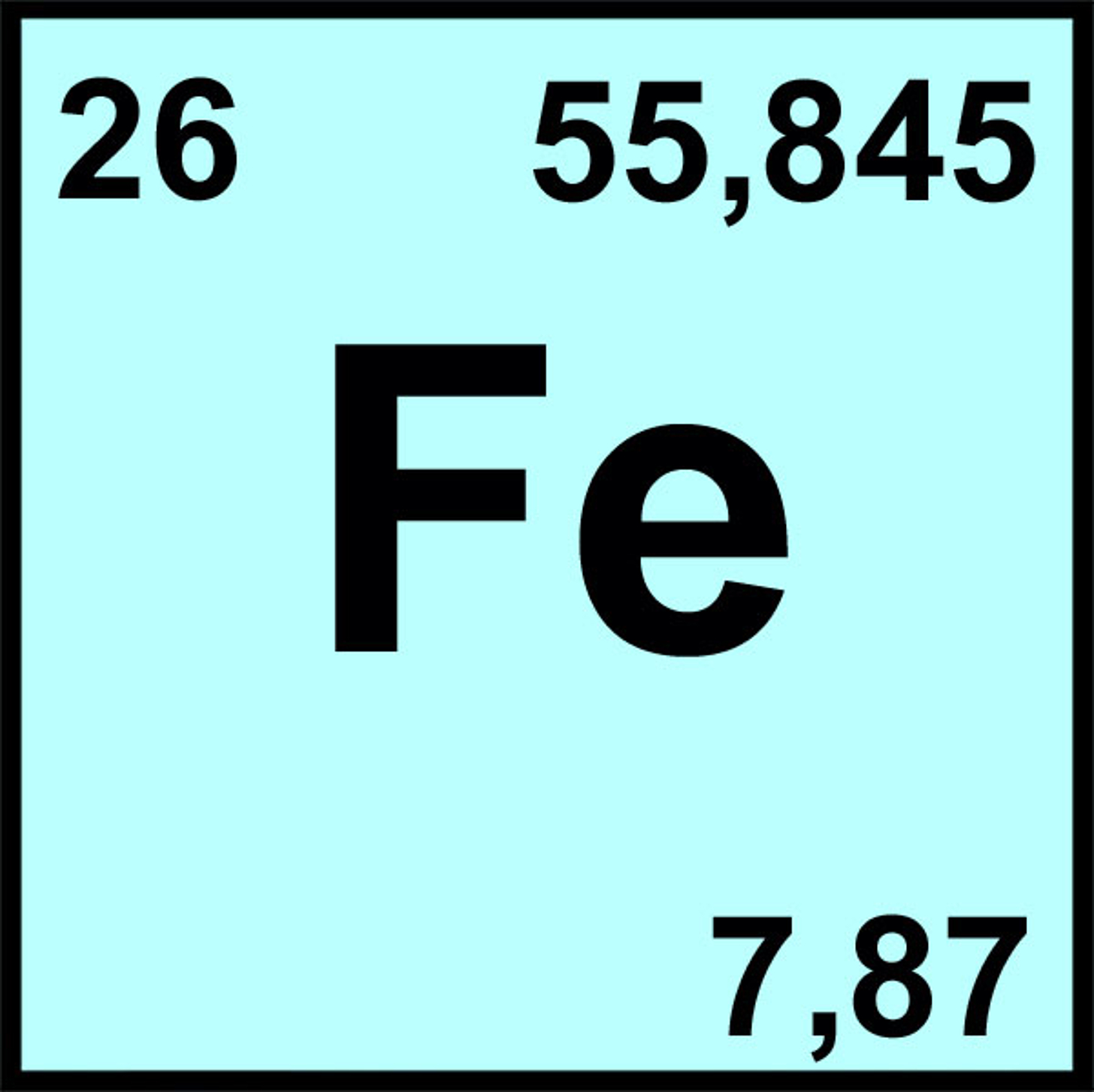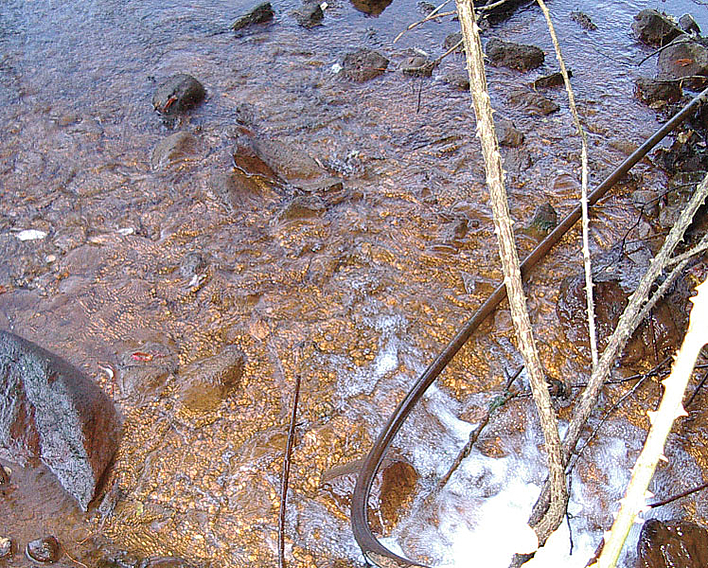Iron removal
Water with an increased iron content (> 0.2 mg / l) must be treated. Water containing iron is generally reduced-oxygen or low-oxygen water in which the iron is usually present dissolved in bivalent form as Fe2+. Iron is a heavy metal that is normally only present as an oxide in the earth's crust. During the course of leaching, water, the oxygen content of which decreases over time due to biological processes, comes into contact with these oxides in deeper layers of the earth. When the oxygen content is low, iron oxides are reduced by biological metabolic processes and the iron released during the process is dissolved in water. Although iron dissolved in water is physiologically harmless and non-toxic to humans, it leads to incrustations and deposits in pipes, fittings (aerators) and machines (e.g. washing machines). Problems can also arise due to micro-organisms such as Gallionella (iron oxidiser). These organisms use as an energy source the energy released in the oxidation of divalent iron to trivalent iron. Under optimum conditions, they form gelatinous lumps that can cause massive problems.
For all of these reasons, deferrization (and also demanganization) is one of the oldest water treatment processes along with filtration.
Biological deferrization
The biological deferrization process as described above has hardly any significance in the technical context, rather it mainly occurs only in nature. A stable process requires strict adherence to process-relevant parameters such as low oxygen content, pH value, CO2 content, redox voltage etc. This process is therefore of hardly any importance for drinking water treatment today.
Chemical deferrization
Chemical deferrization occurs through simple oxidation with oxygen. The literature contains a wide variety of information about reaction speeds, most of which does not correspond to practical experience. The fact is that divalent iron dissolved in water oxidizes very quickly with oxygen to form insoluble trivalent iron oxide hydrate FeO(OH). The crucial variable for oxidation is the oxygen content in the water, i.e. the gaseous oxygen must first be dissolved in the liquid water.
This means that the oxygen content and the gas introduction and mixing system are process-relevant variables.
Oxidation with atmospheric oxygen
If the iron content is low, air is mixed with the raw water upstream of the filter to oxidize the iron. However, air contains only about 21 % oxygen and 78% nitrogen. For this reason, high air volumes, large reaction vessels (oxidizers) and large ventilation systems are required for higher iron contents.
We therefore only recommend oxidation with atmospheric oxygen for smaller systems and low iron contents.
Oxidation with oxygen
Atmospheric oxygen can be concentrated to 95% with oxygen generators. At just under 5%, nitrogen no longer plays a disturbing role. The venturi / injector systems allow the oxygen to be dissolved in the water very efficiently. The oxidation of the iron proceeds very quickly and does not require large reaction vessels. The retained iron oxide hydrate forms good flakes, making it very easy to separate and, over time, results in an increase in the differential pressure in the filter. Back-flushing generally occurs as a function of the load and therefore the throughput. Extremely effective deferrization (< 0.01 mg/l) can be achieved in particular even with high iron contents in the raw water by way of classic multi-layer filtration with upstream oxygenation. The use of membrane systems (microfiltration / ultrafiltration) for deferrization can be considered for smaller iron contents.
Oxidation with ozone
In the case of organically-bound iron, ozone might be necessary for oxidation. As a strong oxidizing agent, ozone breaks down humic bridges and can thereby also oxidize iron.
We would be happy to assist you with the dimensioning of a water treatment system and with finding the optimum configuration. Please contact us!





